Rum Hunting - Day Three - RemyLand (Part One)
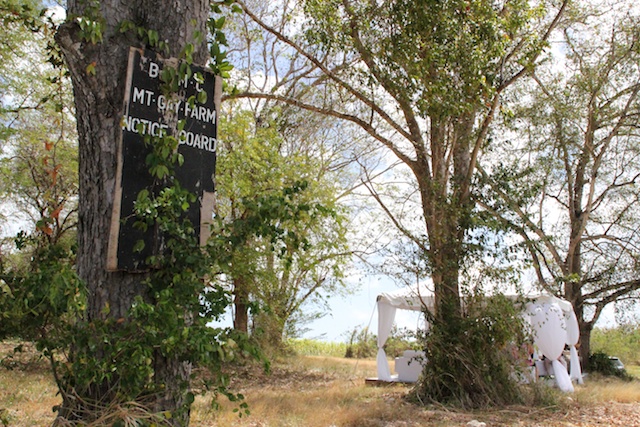
What a day we've had. There's so much to share with all of you. This morning and afternoon were spent doing a variety of activities that were meant to help us understand the reason that Mount Gay Rum tastes the way it does. We learned about the island of Barbados, about how it's not a volcanic island like the other Caribbean outposts, and how the coral limestone that composes the island helps filter the drinking water. The rain must travel through layers of it before filling the many wells underground. There is some damn fine water in Barbados.
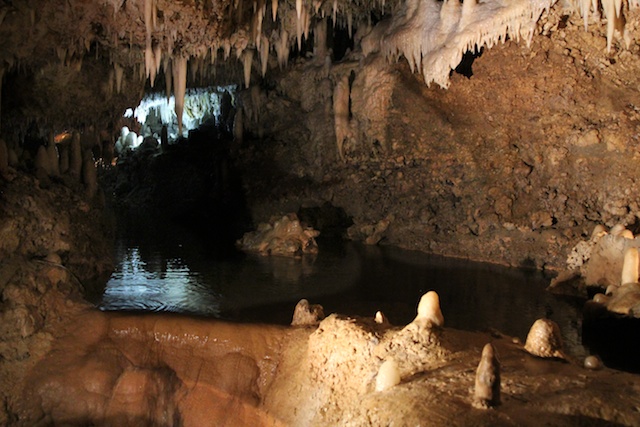
Harrison's Cave is one of many natural wonders one can visit on the island. Hundreds of feet beneath the surface is a series of passages and caverns that have hollowed out over thousands of years due to rainwater that drips down through the limestone. Stalactites and stalagmites eventually join columns within pools of pristine water that are deposited throughout the cave. We took a forty-five minute tour under the earth before emerging with a thirst (for water, rum, and more knowledge about Mount Gay!). Remy wanted us to understand that the island of Barbados is unique, quite fascinating, and has incredible drinking water. Supposedly this is big part of why Mount Gay rum tastes so good. I'm fine with that!

Remy had all their ducks in a row today. We got on the bus at 8:30, hit up Harrison's Cave, then stopped off at an official Mount Gay rum shack, where more Remy people were expecting us. There are no billboards or large advertisements allowed on the island, so rum shack owners make deals with brands to paint their buildings instead. A rum shack like this one might get $3000 a year for choosing allegiance to Mount Gay and Remy, which is a nice little cherry on top of what is already brought in from liquor sales.
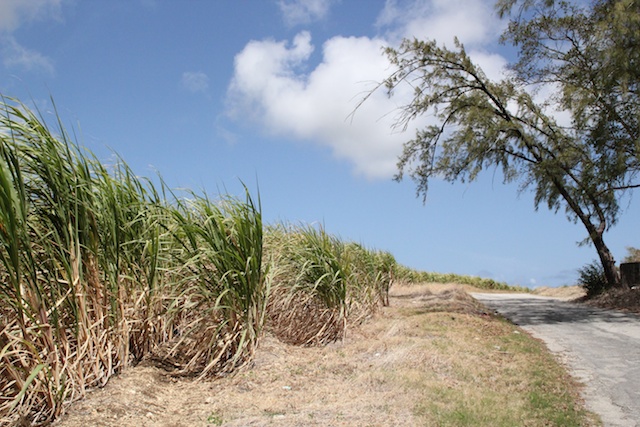
We know that the water can play a big role in why a spirit tastes the way it does. We know this from single malt whisky studies. Barbados has great water. It also has a lot of sugarcane and, since rum is made from sugar, it was time to learn about the fundamental substance behind rum distillation.
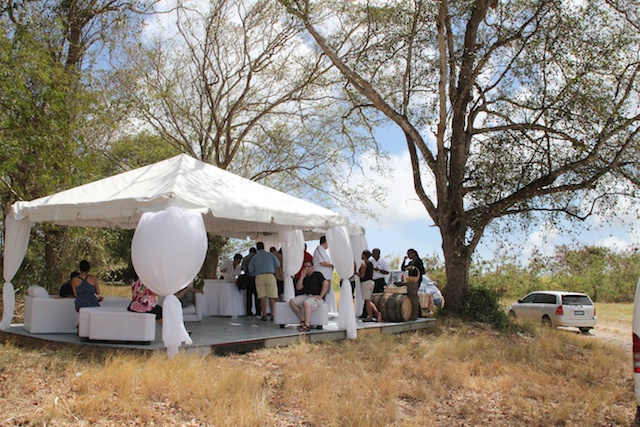
Awaiting us in the sugarcane field was a giant tent with a few chefs who had prepared some fantastic snacks for us. While we had a small bite and some refreshments, Chesterfield Browne - Mount Gay's International Brand Ambassador - got out the machete to show us some sugarcane basics.

Cane is quite an interesting plant. It has a hard, thick outer layer, but a fibrous and juicy inner core. Most of the sugarcane on Barbados is now machine harvested, but some hard to reach or mountainous fields are still done the old fashioned way – with a machete. We all got a turn manning the blade, cutting down the sugar cane, and taking a bite out of the sweet inside.

I found it quite interesting tasting some rum right next to the sugar cane. There are definitely similar flavors to be found that carry over into the Mount Gay profile. However, there was one big problem with this explanation: there wasn't much talk about molasses. Mount Gay rum isn't made from fresh sugar cane. While sugar does indeed come from sugar cane, Mount Gay rum is made from fermented molasses – the by-product of the sugar, which is the by-product of the sugar cane. Shouldn't we go to a refinery, maybe? Shouldn't we at least taste some molasses? Right before getting into the van to make our way to the distillery we got to sample a wee bit of molasses which was incredible because it was raw and fresh. Now that is where I really got an idea of why rum tastes the way it does. There was a bit of black licorice and menthol in the bitter and intense flavor of the leftover sludge. That's where Mount Gay comes from. I could taste it and sense it. But that wasn't very important. At least, Remy didn't think it was.
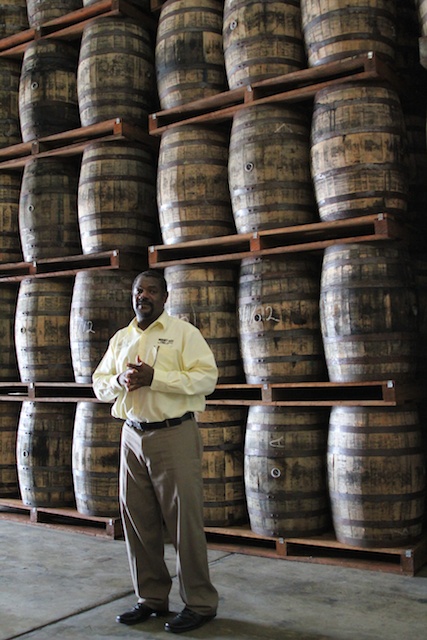
At the distillery we met Allen Smith – the master blender for Mount Gay. We settled down in one of the open warehouses (there are four at Mount Gay) which had pallets of barrels stacked upward rather than on their sides.
"How do you taste what's in the barrels?" we asked immediately, flabbergasted that the bungs were on the side in a vertical position. Pulling the peg out in this position would shower the culprit immediate with a stream of valuable liquid. What's the deal? Apparently, they cover the bung in Barbados and drill a new whole on top which allow them to palletize their barrels in three by three rows, making nine barrels per pallet. Allen said there was more wood exposure that way, they had less evaporation due to a smaller surface area, and they could fit more barrels per warehouse if they did it vertically. That makes total sense. Barbados is hot so the Angel's Share can be about 10-15% by volume per year (Scotland is more like 2-3% in comparison). That's a huge loss to evaporation, so minimizing the surface area is helpful. Nevertheless, they're in a hot, humid climate, so there's not much you can do. Mount Gay does top up their barrels after a few years, combining what's left of the remaining rum to fill up the remaining space.
More to come! We're off to dinner.
-David Driscoll
